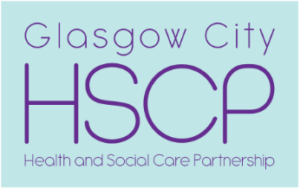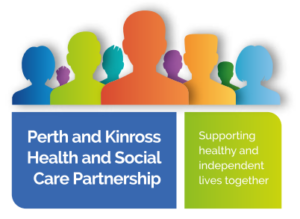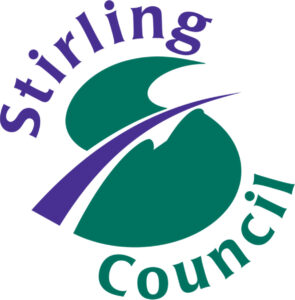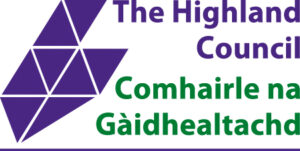A Mental Health and Wellbeing Strategy for Scotland: Feedback on Draft Strategy
SUBMISSION FROM SOCIAL WORK SCOTLAND, TO SCOTTISH GOVERNMENT CONSULTATION
03 February 2023
Social Work Scotland is the professional body for social work leaders, working closely with our partners to shape policy and practice, and improve the quality and experience of social services. We welcome this opportunity to comment on a Mental Health Wellbeing Strategy for Scotland and Scottish Government’s vision of “Better Mental Health and Wellbeing for All”.
Themes: There were identified themes that emerged in the Strategy that we would suggest be reworded or clarified to support a more universal understanding of the Strategy and where the social work and social care role in the whole system approach were lacking. These areas in each section are detailed below but can be grouped into the following themes:
- We welcome the reference to the impact of the social determinants of health on an individual’s mental health and wellbeing. This will be a significant factor at present and in the coming years as we move through the cost of living crisis and take forward the learning from the impact of the Covid pandemic.
- Including living experience within the development of national and local approaches to delivery on this Strategy is absolutely right, and we recommend that this be expanded to explicitly cover the workforce experience within this intention.
- Whilst we welcome the whole system approach set out in the Strategy, we have concerns about gaps which will affect its success. We have made recommendations to ensure the Strategy is as robust as possible in this regard.
- Clarity of who this Strategy applies to and who will carry forward its recommendations and provide the reassurance of its delivery are required. We accept that everyone should benefit from this Strategy, but the suggestions around delivery, monitoring, and data capture need clarification. Fundamental to delivery of this Strategy will be the clear articulation of who is responsible at key points, without which it will not be achieved.
- Connection of this Strategy with other legislative responsibilities, around equality and legal duties carried out across the system. Recommendations are made for carrying forward aspects of the Strategy that are made without the recognition of the duties in statute carried forward by social workers on behalf of local authorities or the tensions that they can cause. This should be recognised as a potential conflict when delivering on its vision.
- Connections from the Strategy into the next stages of its development do not capture the whole system. This is specific in reference to the workforce and the Planning phase of data capture to enable effective workforce planning. This only captures NHS workforce and we have been advised that social work and social care data capture will commence in phase 2, which is anticipated to begin in 3 years. This is shortsighted and does not show an understanding of the significance of the community based mental health workforce that are employed by local authorities, without which, the delivery of whole system recommendations will not be achieved.
Feedback and Commentary:
Section 2: Introduction/Context: This section outlines the vision for the strategy, “Our vision is of a Scotland, free from stigma and inequality, where every person experiences and has the right to achieve the best mental health and wellbeing possible.” And its expectations, “To achieve this bold vision, a huge effort is needed from local and national Government, national organisations, public bodies, the voluntary sector”.
Feedback: The effects of stigma and discrimination can play a significant role on an individual’s mental health and wellbeing, however as mentioned in our consultation response, “the social determinants of health will greatly impact mental health and wellbeing, and the breadth of economic response to the inequalities that contribute to poverty and disenfranchisement require multi agency and multi-disciplinary efforts to resolve.” We are pleased to see that throughout Section 2 of this Strategy there is reference to the importance of the social determinants of health and the significance they can have on achieving mental wellbeing, the importance of relationships, and the collective responsibility of communities and organisations to work together to support each other.
Our recommendation is to clarify, in Section 2, who the Strategy is for. Clarity on who will benefit from the recommendations and actions coming from this Strategy would help frame people’s thinking as they read through it, and support the aims later in the report to identify meaningful impact. Who will deliver on the Strategy, and what constitutes this workforce are also areas that need to be explicit at the start of this Strategy to enable the data capture and analysis suggested later in the document.
This section will also benefit from a reference the Mental Health Law Review, the Independent Review of Inspection, Scrutiny, and Regulation, the Promise, and the ongoing developments of the National Care Service, all of which will contribute to recommendations that will impact the aims of this Strategy.
Section 3: Vision: This section states the vision for the Strategy as quoted in the previous section, and outlines the Promote, Prevent, Provide, approach that will be taken to deliver on the vision. Definitions are as follows:
“3.2 To achieve this, we will:
- Promote positive mental health and wellbeing for the whole population, improving understanding and tackling stigma and discrimination;
- Prevent mental health issues occurring or escalating and tackling underlying causes and inequalities wherever possible; and
- Provide mental health and wellbeing support and care, ensuring people and communities can access the right information, skills, support, services and opportunities in the right place, at the right time”
Feedback: This section would be clearer with specificity around who is responsible for delivering on the Strategy as highlighted for recommendation in Section 2.
In this section while the definitions are provided for Promote, Prevent, and Provide, there isn’t an easy way to understand the “who for and who by”, which will be vital for the successful implementation of the Strategy on the whole.
The section would also benefit from an acknowledgement of the interconnections across these definitions; for example, those delivering on the Strategy are also its intended beneficiaries. Recognising and acknowledging the tensions that may emerge from the vision is important.
Section 4: Guiding Principles: The section outlines the following principles:
“4.1 The Strategy is based on 10 core principles. It will be:
- Founded on equality and human rights
- Trauma responsive
- Developed and delivered in partnership
- Based on a ‘no wrong door’ approach
- Outcomes focussed
- Data and evidence driven
- Based on a whole person approach
- Focussed on the wellbeing of individuals, families, communities and society”
It further states that the Strategy will be informed by the voices of those with lived experiences and take a life stage approach.
Feedback: Social Workers carry forward duties on behalf of Local Authorities and the Chief Social Work Officer across the wellbeing and protective spectrum. To achieve this they can often be working with individuals who are compelled through legislative powers and duties. In such instances it is of the utmost importance that the individual’s human rights, their past and present wishes, and the wishes of their carers and family are taken into account. The Guiding Principles should reflect the balance that needs to be struck between instances where an individual is compelled to receive support, care, and treatment, and their rights in that space.
The protective suite of legislation that social workers take forward, and the principles that guide that work in statute, should be acknowledged here as informing the Strategy and listed as important Guiding Principles for carrying forward mental health and wellbeing recommendations and actions.
Section 5: Outcomes and the Difference the Strategy will make: This section lists outcomes that the Strategy describe as things they need to see changed over the longer term. The outcomes will be monitored and evaluated to support an evidence base that the Strategy has achieved its vision. The framework of outcomes will be used to direct investment in the future. The section acknowledges that, “People will have different starting points and need different kinds of support to get them to where they want to be”. The Outcomes identified are as follows:
“5.5 In order to achieve our vision, we will work with partners to deliver on 9 overarching and high level outcomes. The first 5 outcomes relate to changes we want to see at an individual, community, population and societal level.
- The overall mental health and wellbeing of the population is increased and mental health inequalities are reduced (Population)
- People with mental health conditions, including those with co-existing health conditions experience improved quality and length of life, free from stigma and discrimination (Individuals)
- People have an increased understanding of mental health and wellbeing to access appropriate support (Individuals)
- Communities are better equipped to act as a source of support for people’s mental health and wellbeing, championing the eradication of stigma and providing a range of opportunities to connect with others (Community)
- Through a range of cross-policy actions, we have increasingly worked to tackle the wide ranging social, economic and environmental factors that negatively impact people’s mental health and wellbeing including poverty, stigma, discrimination and injustice (Societal Influences)
5.6 To achieve these outcomes for people, we will need to see changes to the infrastructure that supports them. The four outcomes below therefore relate to the changes we want to see for services and support, data and evidence and the workforce. We want people to be able to access the right support at the right time and in the right place and way for them.
- Comprehensive support and services that promote and support people’s mental health and wellbeing are increasingly available in a way that meets and respects individual needs (Services & Support)
- Mental health support and services are better informed by people with lived experience and practitioners, and have a focus on recovery. (Services & Support)
- Decision-makers and practitioners are better able to access the evidence, research and data they need to ensure a more evidence-based approach to policy formation and practice. (Data & Evidence)
- The future mental health and wellbeing workforce is diverse, skilled, supported and sustainable (Workforce)”
Feedback: The definition of Outcomes as, “the positive differences or changes that policies, services and activities can achieve for people” does not reflect the inclusion of individuals themselves within it. People have agency and responsibilities within these areas, and to take forward an asset-based approach there must be an acknowledgement of an individual’s rights and responsibilities to engage with their own health. The Outcomes don’t explore that fact well enough, and there should be an acknowledgment of this in future versions of the Strategy.
We have already referred (in Section 2) to the need for clarity on who the Strategy is for, who is delivering it and who will benefit. This is particularly relevant here, as the use of the term “people”, in recognising that areas will be starting from different places to meet the Outcomes identified, is not helpful. The lack of clarity on what defines “people” will not support a clear responsibility or allow for the ability to accurately measure the outcomes identified.
The Outcomes identified to change the structures that people engage with around mental health and wellbeing do not take into account the points made in the previous section around Guiding Principles and how the Strategy will be informed; it is missing the protective legislation suite and the duties and powers carried out by the workforce in this area.
The offer of a definition for Communities is welcome, however Social Work Scotland suggests further definitions will be needed to make this Strategy accessible and deliverable, and have noted where this would be helpful earlier in the response.
The recognition of the importance of relationships is welcome, and we support that continuation throughout the document as a helpful basis from which to view the engagement of the workforce and to support workforce capacity to deliver in a relational way. We also support the inclusion of lived experience in the continuous improvement on recommendations, however, we would add to this that there should be mention of the workforce experience also informing the experience that this Strategy draws upon. Once the clarity of who is identified to deliver this Strategy is made, the explicit reference to that voice would be a welcome addition to the document.
With the expectation of continued improvement through the Outcomes, and the statement made that the framework will support the direction of funding to achieve Outcomes, it is imperative that the role of community based services, delivered by social work and social care, are identified explicitly in this Strategy. The Strategy correctly identifies the interdependencies of this Strategy across other Scottish Government strategies as part of its ability to delivery successfully on its aims. In the absence of recognising the significant portion of the workforce that will be delivering across these recommendations, there is a high risk that the Strategy will be unlikely to meet its aspirations.
Section 6: Mental Health in Scotland, Setting the Context: This section details the context within which mental health and wellbeing is impacted.
Feedback: We welcome the recognition of the social determinants of health and how they can impact mental health and wellbeing in this section and suggest that further strength is given to the text in Section 2 to highlight this.
Section 7: Data and Evidence, Known Causes and Challenges: Within this Section there is recognition of supporting people with multiple and complex need may add additional complexity.
Feedback: This section would benefit from an acknowledgement that in some instances there will be individuals who are engaging with services as a result of compulsory measures through legislation, adding an additional complexity around balancing the rights and responsibilities of individuals with the duties and powers of those carrying forward legal duties. This applies across social work, social care, and health, and would be useful to see reflected in this section. While the section ‘Severe and Potentially Enduring Mental Illness’ references the Mental Health (Care and Treatment)(Scotland) Act 2003 for its safeguards, there will often be instances where the balance of someone’s rights are considered against legal duties and powers that reach into other legislative frameworks, so selecting just this Act does not accurately reflect the instances where compulsory measure may come into account or where duties and powers exist across social work, social care, and health. The other protective Acts may have a role to play here, and should be recognised in order to strengthen the deliverable outcomes.
The section also reflects the structural and system challenges identified in delivering integrated support for individuals. As noted in previous sections, the Strategy should be explicit as to what workforce it is referring to, as without a clear definition of the workforce, there will be potential confusion of who should integrate to enable delivery of support, and where that support is happening; for example, in a hospital setting versus a community one. This will also impact the inclusion of those with lived and workforce experience, and how the Strategy will bring their voice into the developments of integration. Without this, statements such as the ones in this section around services not integrating or around data have little meaning, and less opportunity to support sustained change.
Building on this theme, further into section 7 there are assumptions made without clarification around the mental health workforce, and considerations for how to workforce plan that make this section inaccessible for wider interpretation. As the Strategy doesn’t set out at the earliest point who will be delivering its recommendations, the later parts of section 7 that speak about recruitment and retention and workforce data, are not meaningful. It is unclear who the mental health workforce is and until this is clarified, it is unlikely that professionals delivering mental health services in the community or otherwise will recognise themselves in the Strategy or indeed be able to deliver the impact the strategy sets out. During discussion of this Strategy through the Mental Health and Wellbeing Workforce Advisory Group, we were informed that the initial planning for the workforce would focus on NHS staff, and that phase 2, which would start in 3 years, would include data capture for social work and social care planning. In Social Work Scotland’s view, this is shortsighted and does not recognise the balance of support in mental health between community and hospital support and care.
Section 8: How will we achieve our outcomes- Promote, Prevent, Provide:
Feedback: This section would benefit from clearly defining the groups that the Strategy is targeting under each area. A theme that has emerged throughout reading this Strategy remains a lack of clarity on who the recipient of the Strategy recommendations is and who will deliver the recommendations and actions. In our view, this remains an issue in this section, with recommendations that span from raising public awareness, to expectations of understanding of aspects of mental health and wellbeing, through to how services should be delivered. Critically, within the Prevent section there is no recognition of individuals having a role in their own prevention, which risks a sense of service-led approach to prevention, thus compromising the human rights approach identified in the Guiding Principles section.
Later in the section, under Provide, the phrase “safe, effective treatment and care” is used, which also reflects a “done-to” rather than a “done with” approach and could be in conflict with the human rights Guiding Principle. A more appropriate reflection of asset-based approaches that work with and alongside a person could be captured through the use of the word support, in addition to the list provided, or instead of care.
The reference of developing community-based support and care in this section reflects the model of service delivery in place at this time, where the majority of individuals with mental health needs that require support are receiving that support in the community. In our view, there is a natural follow on from this by recognising the social work and social care professionals who deliver this service, and the lack of clarity in the Strategy of this area of the workforce offers substantial risk to the successful delivery of these outcomes.
Section 9: Making it Happen- What do we want to see:
Feedback: Social Work Scotland is really pleased to see the whole system approach reflected here, and to achieve this, the Strategy will need to equally reflect the whole workforce that will be engaged in and responsible for delivering on the outcomes identified. As in previous sections, we strongly recommend that the mental health and wellbeing workforce is clearly defined within the Strategy to enable a shared understanding of a whole system approach.
Additionally, there are gaps in the Strategy that suggest a need for a better understanding of the role social work and social care play within the system. The approach taken in the strategy to reference the public, third and private sectors, and then to highlight the private and third sectors as those delivering services, does not cover the legal framework that guides welfare and protective work with individuals who have mental health difficulties.
Further to this, the statement in section 9.2 that suggests people shouldn’t have to tell their story more than once, doesn’t reflect the relational approach to supporting people experiencing mental health difficulties, where processing incidents and trauma can involve retelling of events to support processing experiences in a safe context. We recommend that this statement be removed.
Section 10: Transforming our approach to mental health and wellbeing
Feedback: This section is grouped around Promote, Prevent and Provide and would benefit from clarifying who holds responsibilities in addressing the recommendations made, as reflected in Section 2 and throughout this feedback document.
The Strategy attempts to convey responsibility to the community and individual, as well as to the workforce around actions to promote mental health and wellbeing, and without clarity in roles there will be challenge in ascribing responsibility to data collection and drawing conclusions from the data gathered.
The suggestion in 10.3 that the role of promoting targeted support to communities and in section 10.6 regarding actions to improve welfare in a local area, do not accurately reflect that this is a duty of local authorities through the Social Work (Scotland) Act 1968 section 12. The duty to promote welfare within a local area sits with the local authority, not the third sector, although it may be that the local authority chooses to commission services by the third or private sector to meet this duty, the overall responsibility sits in statute with the local authority.
In addition to this, the Chief Social Work Officer has a role to advise and guide the local authorities on any services carried out on behalf of social work, and in this case, would hold a significant role on quality of services and support commissioned. Social Work Scotland believes the Strategy should reflect this legal duty to avoid any confusion in interpretation. To that aim, section 10.7 could hold the text that acknowledges this duty and the power to take forward improvement in a local area as it references a desire to work across agencies and government to ensure policies are carried forward.
Under Provide, section 10.10 there is a significant absence of social work and social care in the provision of support for mental health and wellbeing. We refer to the legal duty and power conferred upon local authorities under section 12 of the Social Work (Scotland) Act 1968 as noted above; this applies here and should be written into the Strategy to avoid any doubt in interpretation. There is no recognition of community based services in the list provided within the Strategy at section 10.11, which does not reflect the whole system approach mentioned as key to work being taken forward from this Strategy.
Section 10.12 lists organisations identified as delivering “Mental Health Services” we suggest that this be used as a basis earlier in the document, at Section 2, to explicitly identify the workforce that will deliver the Strategy and who will be responsible for providing data and delivering on improvements. Having this so far into the document is not helpful in achieving an understanding of earlier sections where the mental health workforce is named.
The section on Improving Mental Health Services delivery reads as though there is a single delivery system for mental health and wellbeing, which there is not. This section speaks of a ”no wrong door” approach to mental health, suggesting that there is a single system that people are accessing, when the support that people need across the mental health and wellbeing spectrum could clearly benefit from access at multiple doors.
We wish to emphasise that not all doors will lead to NHS treatment; some support may be provided well before this tier of intervention. The section would benefit from taking a person-centred rather than a systems-based approach to how access to mental health support can be accessed. The statement ending this section that people with mental health needs have the right to the same support as people with physical needs is not in line with legislation. The Social Work (Scotland) Act 1968 places a duty to assess community care need on local authorities.
The Scottish Government requires local authorities to produce eligibility criteria to ensure access to support is approached equitably; in this instance, the statement in the Strategy is incorrect. The support may not be the same, as virtue of assessments being person-centred, but the access to the assessment for support and need should be. Setting an expectation that everyone should have the same support is unrealistic and not person-centred.
Section 11: Workforce
Feedback: The section in itself is unclear as to what organisations make up the workforce that will deliver either core or wider services and the mental health and wellbeing Strategy. In our professional view, this is extremely unhelpful, and could be confusing, in particular where the duty of local authority to promote welfare and assess in their local area is outlined in the Social Work (Scotland) Act 1968. We refer back to core and wider workforces not being clear enough to later draw data from to evidence improvements, or to hold accountable for outcomes delivered.
We agree that there are multiple circumstances impacting recruitment and retention of the ‘mental health workforce’, however, as noted earlier, during the Mental Health and Wellbeing Workforce Advisory Group it was shared that the recruitment and workforce planning to support this Strategy would only focus on NHS workforce, and that social work and social care services, who deliver the community based services to individuals with mental health difficulties, arguably the largest section of service provided in this area, will not be included in the Planning for 3 years.
This approach is woefully shortsighted and does not reflect the whole system approach to mental health and wellbeing purported in this Strategy. The Workforce Vision aims to show value to the workforce delivering mental health and wellbeing services, and Social Work Scotland believes that this oversight of the majority of those providing support and services in the community will not achieve this aim and could not be considered a strategic approach to workforce planning.
Section 12: Definitions
Feedback: This section could be provided as an appendix with reference at the start of the Strategy to refer into the appendix, which would better support clarity of understanding of definitions used to guide the reader.
With particular reference to the definition for Mental Health, we ask colleagues to please refer to feedback provided in the Social Work Scotland consultation response, section 1.2 where we highlight the individual’s perception of control impacts their mental health. It continues to be our view that this would enhance the definition laid out in this Strategy. We suggest this point is also added to the definition of Mental Wellbeing.
Section 13: Mental Health Legislation
Feedback: We believe this section would benefit from the addition of the Adults with Incapacity (Scotland) Act 2000, and reference made to the Mental Health Law Review, along with the reform that will arise from these recommendations that may impact law. The addition of legislation supporting regulation would be helpful, to show the safeguards in place that the Care Inspectorate and Health Improvement Scotland are tasked to take forward; in addition to an explicit mention of the Mental Welfare Commission – as written in statute, their role holds particular significance in regard to ensuring the duties and powers in the Mental Health (Care and Treatment)(Scotland) Act 2003 and the Adults with Incapacity (Scotland) Act 2000 are upheld.
Section 14: Improving Data and Evidence
Feedback: Social Work Scotland agrees that there is a need to improve data capture for the mental health workforce and for those receiving support, and their carers. This section needs to highlight that the SSSC hold regulatory duties for social work and social care and to draw from this registering body for the workforce detail required to enable effective data collection. In addition to the SSSC, the Care Inspectorate should also be approached for data capture as they hold a role in collecting information on services registered to provide social care support.
We also note the development of a broader Health and Social Care Data Strategy within the Scottish Government, and have provided robust feedback to the development of that document and its implementation plan, in ensuring that social work functions, duties and legislation are accurately reflected.
Section 15: Interdependent Strategies
Feedback: We have referenced in the above text what legislation would be relevant to sight in this section and refer to these comments for feedback on this area.
For further information on the content of this response, please contact:
Jennifer Rezendes
Head of Policy and Workforce
Social Work Scotland
Jennifer.Rezendes@socialworkscotland.org



















